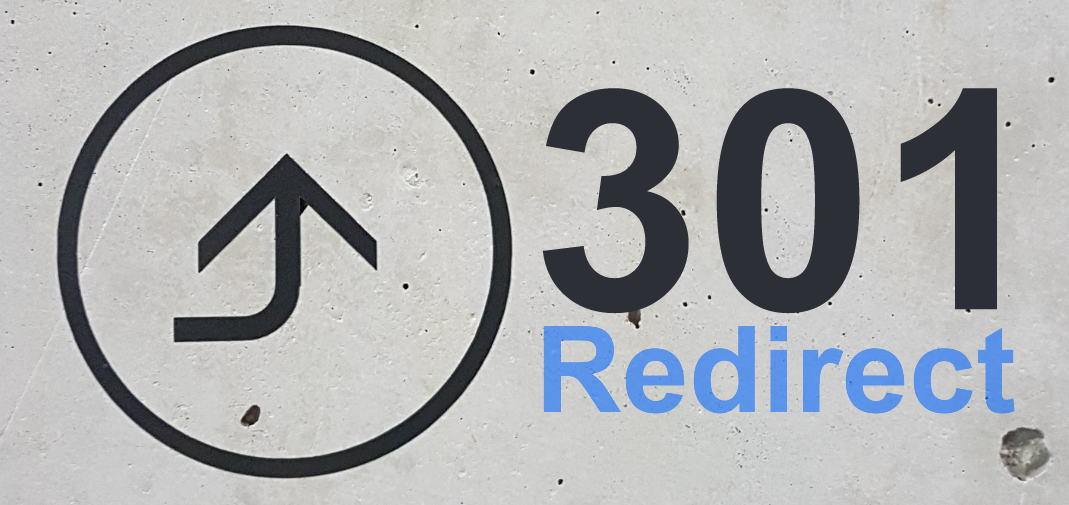Websites are fickle. There’s no other way to say it! Changing even one simple URL can cause big problems for site owners—especially if you don’t take the proper steps to bridge the gaps.
It’s why 301 directs exist. Think of them as patches over the holes that appear in your website’s infrastructure when you change a URL.
301 redirects are an important tool for maintaining website integrity—but like any tool, site owners need to use them appropriately. 301 redirects serve specific purposes. Here’s a look at how to use them the right way, what to avoid using them for, and how good use of 301s can improve your website’s integrity.
What is a 301 redirect?
 A 301 redirect is a type of HTTP response status code, used to direct inbound and inter-site traffic to a new URL. Here’s a simple example to illustrate how a 301 words to route traffic:
A 301 redirect is a type of HTTP response status code, used to direct inbound and inter-site traffic to a new URL. Here’s a simple example to illustrate how a 301 words to route traffic:
You’ve recently updated a URL on your site that was too long. Instead of www.mysite.com/blog/ideas/december/guide-to-301-redirects, you’ve updated the URL to www.mysite.com/301-redirects. It’s easier for people to type in and cleaner for site structure. But people have already shared the original URL—now, when someone clicks it, they’ll get a 404 error, since the old URL is gone. Installing a 301 redirect automatically points the traffic to the old URL at the new one, so people get to the right place.
Think of 301 redirects as a bridge between the old and the new. Whether the URL changed, you removed the page or the site migrated, 301s link intent to destination and make sure people get to where they need to go.
Recommended: Create your custom 404 page not found – no plugin required please!
More than a tool for directing traffic, 301 redirects are part of crucial site infrastructure maintenance. Using 301s tells Google and other bots that you’re paying attention to your changing website and updating accordingly. Google sees 301 redirects as an important part of user experience and website reliability, which is why they pass between 90-99% of link equity from the old URL to the new destination.
4 reasons to use a 301 redirect
Maintaining site integrity means more than using redirects—it means using them correctly. Here’s a look at the four most common reasons for redirecting URL traffic using a 301:
- You’ve reorganized your site: Moving things around on your site is a good sign you’re keeping up to date with the times. Sometimes that means changing a URL here and there. When you do, install a 301 to preserve traffic and new URL authority.
- You’ve changed URL structure: URL simplification across the board can be a good idea. Removing extra subdirectories or simplifying path names is a great way to clarify your URLs and improve the visibility of your site. If you make a change, throw a 301.
- You’ve moved domains:If you’ve been building a test site or are migrating your site over to a new domain, 301s are the perfect bridge. It’s the perfect way to make sure people (and search engines) find the right pages and content.
- You’ve secured multiple domains:Many site owners want to secure different top-level domains—.com, .biz, .info, etc. But you don’t want a different site for each one of these domains! The simple solution? Use 301s to redirect traffic to your main domain.
There are other uses for 301 redirects, but these are the most common, best-case uses. Each of them contributes positives to your site’s integrity and authority.
Recently, a pizza and delivery bag company called Incredible Bags launched their new website. Prior to the new site, they had 5 website properties: ovenhot.com, incrediblebag.com, mealsonwheels.com, ultimatepizzabags.com and aplusbags.com. They decided to 301 redirect every URL on all 5 sites to the most like URL on the new site, which gave the new site instant boost and is now thriving because of the addition of 301 redirects.
Avoid these simple 301 mistakes
Believe it or not, there are ways to abuse 301 redirects! For as much good as they can do for positive site SEO and URL integrity, poorly-used 301s can cause some big problems. Here are a few pitfalls to keep in mind as you implement redirects:
- Know when to use a 301 (permanent) vs. a 302 (temporary)
- Don’t forget to use a 301 when you change or remove a URL
- Avoid stacking or looping too many 301 redirects on top of each other
- Check to make sure your 301 redirect actually works
Improper use of 301s—such as too many linked together or to vastly different domains—will have a negative impact on your user experience and SEO, not to mention site integrity.
Site integrity has a lot to do with URL structure
The most important job of your website is to work properly. It doesn’t matter how cool it looks or what it can do, if someone clicks a link and the page they want isn’t there, you’ll lose them. The purpose of a 301 redirect is to get people to the right place, even as your website continually changes. If a URL changes or gets removed, a 301 will send your traffic to an applicable destination.
Used right, 301 redirects will make your website a navigable place for visitors and keep it in good standing with search engines. If you’re seeing 404 errors or have traffic drop-offs, it’s time to start thinking 301 redirects.
Comments are closed.